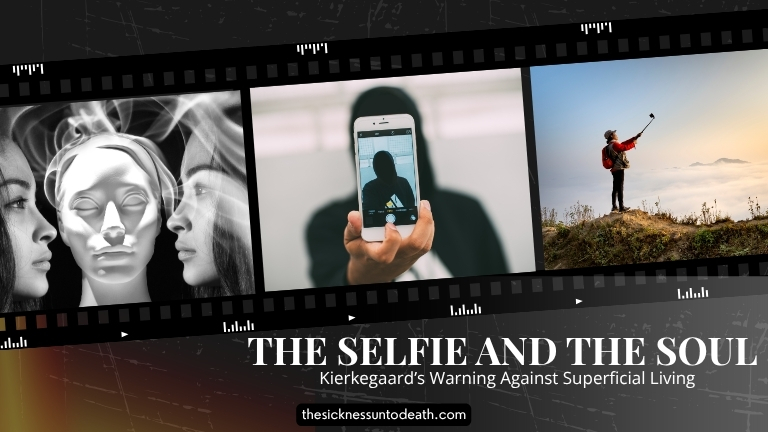Explore how Kierkegaard’s idea of the authentic self contrasts with the curated identities we project on social media.
It’s never been easier to present a version of ourselves to the world. With a few taps on a screen, we can edit, caption, and post the life we want others to see. We control the lighting, the angle, the timing—and in doing so, we build a curated version of who we are. One selfie at a time.
But what happens to the self behind the screen? The one who isn’t always glowing, smiling, or composed? What happens when the soul—the inward, vulnerable, searching part of us—is buried beneath filters and performance?
Nearly two centuries ago, Søren Kierkegaard saw this danger coming. His philosophy speaks directly to the modern struggle: how do we remain true to ourselves in a world that rewards appearances over authenticity?
The Performance of the Self
On social media, we’re encouraged to craft an identity. We showcase success, beauty, lifestyle, and cleverness. And yet, many of us feel strangely hollow—exhausted by the performance, unsure who we are when the camera is off.
Kierkegaard warned about this long before the internet existed. He wrote about the temptation to live for the approval of “the crowd”—to build our identity on how others see us, rather than who we truly are.
“The biggest danger, that of losing oneself, can pass off in the world as quietly as if it were nothing.”
His fear wasn’t just about lying to others. It was about forgetting who we are by constantly performing who we think we should be.
The Authentic Self vs. the Projected Self
To Kierkegaard, the authentic self isn’t something we create through effort or style. It’s something we discover through honesty, reflection, and spiritual grounding. The self is not an aesthetic—it’s a relationship with truth, especially the truth of who we are before God.
In contrast, the projected self—what we might call the “social media self”—is fragile. It depends on likes, follows, and validation. It’s always under pressure to appear a certain way, and never at rest.
This kind of living isn’t just exhausting. It’s spiritually damaging. Because when we neglect our inward life, we become alienated not just from others, but from ourselves.
Why This Still Matters
In an age that prizes visibility, Kierkegaard invites us to consider the cost. What if our curated identities are actually keeping us from becoming who we truly are? What if constant comparison, perfectionism, and external validation are symptoms of a deeper disconnection?
Kierkegaard’s writings suggest that superficial living isn’t harmless—it’s a kind of despair. Not the loud, dramatic kind, but the quiet despair of a life never examined, never truly chosen.
“To despair is to be unwilling to be oneself.”
That line cuts to the core. Because in the quest to be admired, we might lose the very self that longs to be known.
Choosing Depth Over Display
Living authentically doesn’t mean we abandon social media. But it does mean we ask better questions:
- Am I posting to express, or to impress?
- Do I know who I am, apart from how I’m seen?
- Is my soul being fed—or just my image?
Kierkegaard calls us to something deeper. To step away from surface living and step into a life of truth, courage, and spiritual honesty. A life where we dare to be ourselves—not the polished version, but the real one.
Final Thoughts
In a culture of curated content and endless comparison, Kierkegaard’s voice is a much-needed wake-up call. The soul, he reminds us, cannot thrive on appearances. It needs something more: truth, inwardness, and a faith that anchors us beyond the screen.
The selfie may show the face—but it’s the soul that holds the story.
And perhaps the most radical thing we can do today is to stop performing, start reflecting, and rediscover who we are when no one else is watching.

